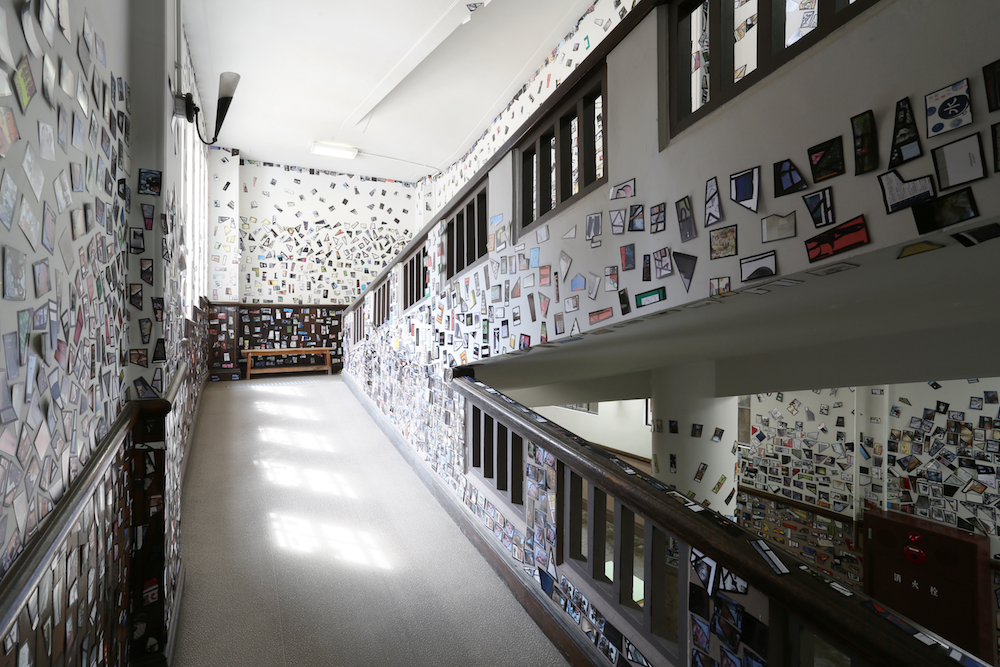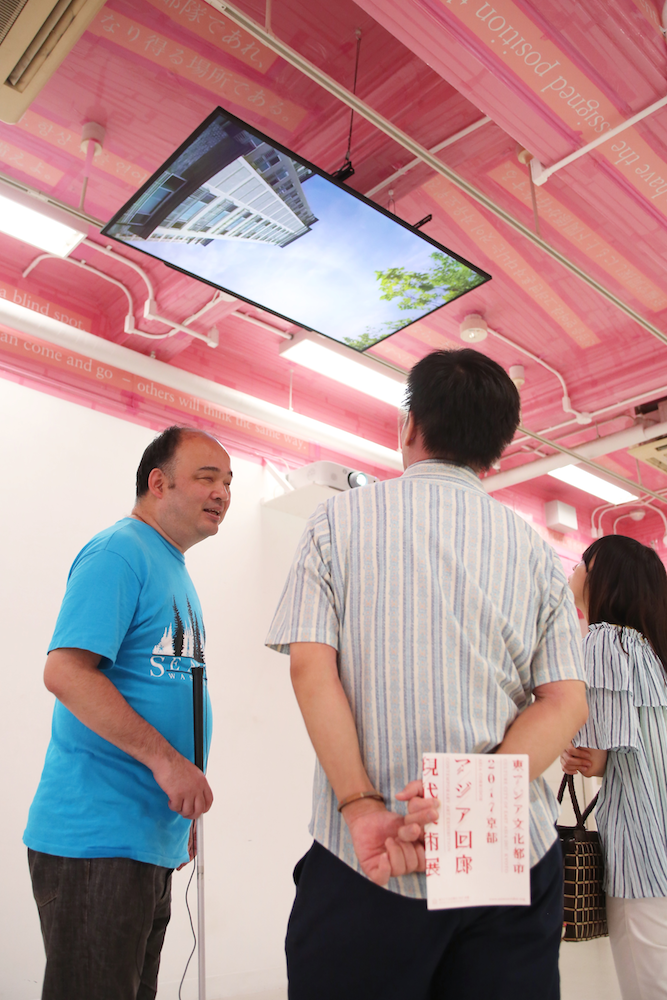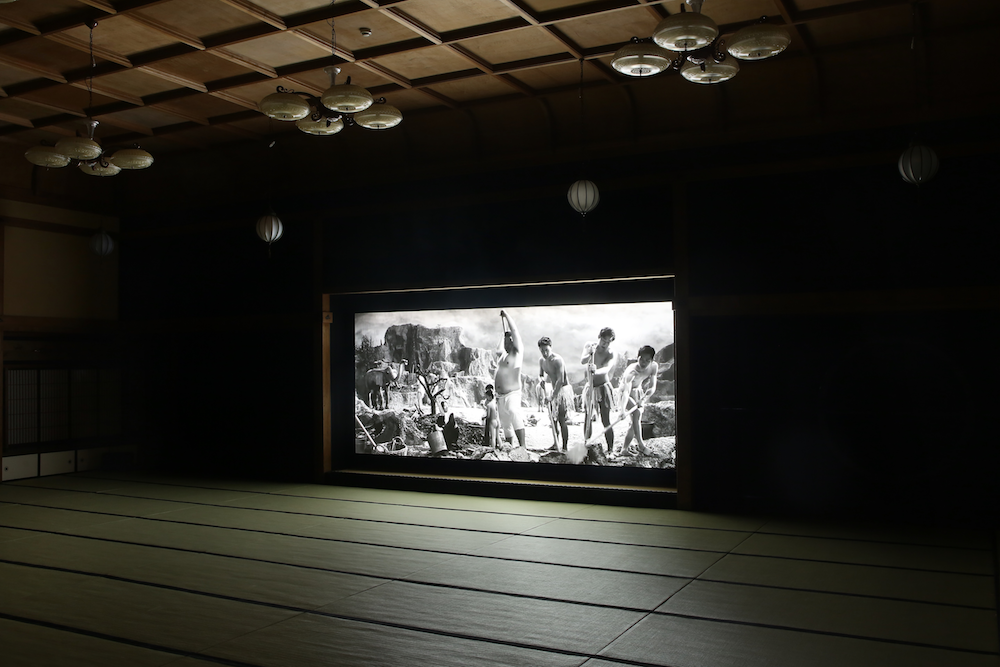ASIA CORRIDOR CONTEMPORARY ART EXHIBITION
HAPPENINGText: Amelia Ijiri
The second venue is the Kyoto Art Center, a Registered Tangible Cultural Property, a renovated, former Elementary school presently used for local and international art projects, including the visual arts, music, theatre, dance and crafts.

Sadaharu Horio + On-Site Art Squad KUKI, Atarimae-no-koto-Paint placement and so on, 2017, Photo: Takeru Koroda
On the second floor, Sadaharu Horio + On-site Art Squad KUKI, transformed an elementary school classroom into a vivid, surreal space with objects hung above a floor covered with colorful papers alluding to “air.” Other classrooms house artworks by Kodai Nakahara who exhibits art from his childhood as an art curriculum and Oh Inhwan’s site specific pink-hue room, “Looking Out for Blind Spots” (2014-present), among others. A large-scale mixed sculpture by Hyon Gyon fills the auditorium, shared with Lu Yang’s video/digital “Lu Yang Gong Tau Kite” (2016). Yang Fudong’s “Moving Mountains” (2016) is inspired by a tale of a foolish man trying to move a mountain which is a well-known fable from Chinese mythology about the virtues of willpower and perseverance. Tao Hui’s installation, “Excessive” (2015) explores problematic family dynamics centering on a daughter’s sixth finger.

Oh Inhwan, Looking Out for Blind Spots, 2014-present, Photo: Takeru Koroda
This year’s exhibition once again gathers artists from the Asian corridor to display representative works against the backdrop of culturally significant Kyoto sites. Culture here is once again used as a mediating influence between three nations with an enormously rich fabric of cultural heritage, though they are presently embroiled in a number of other divisive actions.

Yang Fudong, Installation view of Moving Mountains, 2016, Photo: Takeru Koroda
This year’s Artistic Director, Akira Tatehata, states in a letter that the world is afflicted by isolationism and bigotry, so projects like Asia Corridor Contemporary Art Exhibition, which promote communication and mutual understanding through culture and art, become places for sharing emotions and contributing to building a more tolerant and harmonious society.
Culture City of East Asia 2017 Kyoto – Asia Corridor Contemporary Art Exhibition
Date: August 19th – October 15th, 2017
Place: Nijo Castle and Kyoto Art Center
Tickets: Combination Tickets 1,200 yen (Special Area Admission 600 yen)
Organizers: Culture City of East Asia 2017 Kyoto Executive Committee, Kyoto City
Management: Culture City of East Asia 2017 Kyoto Contemporary Art Division Management Executive Committee
In partnership with Kyoto Art Center
Tel: +81 (0)75 661 3755 (Kyoto City Call Center)
https://asiacorridor.org
Text: Amelia Ijiri




